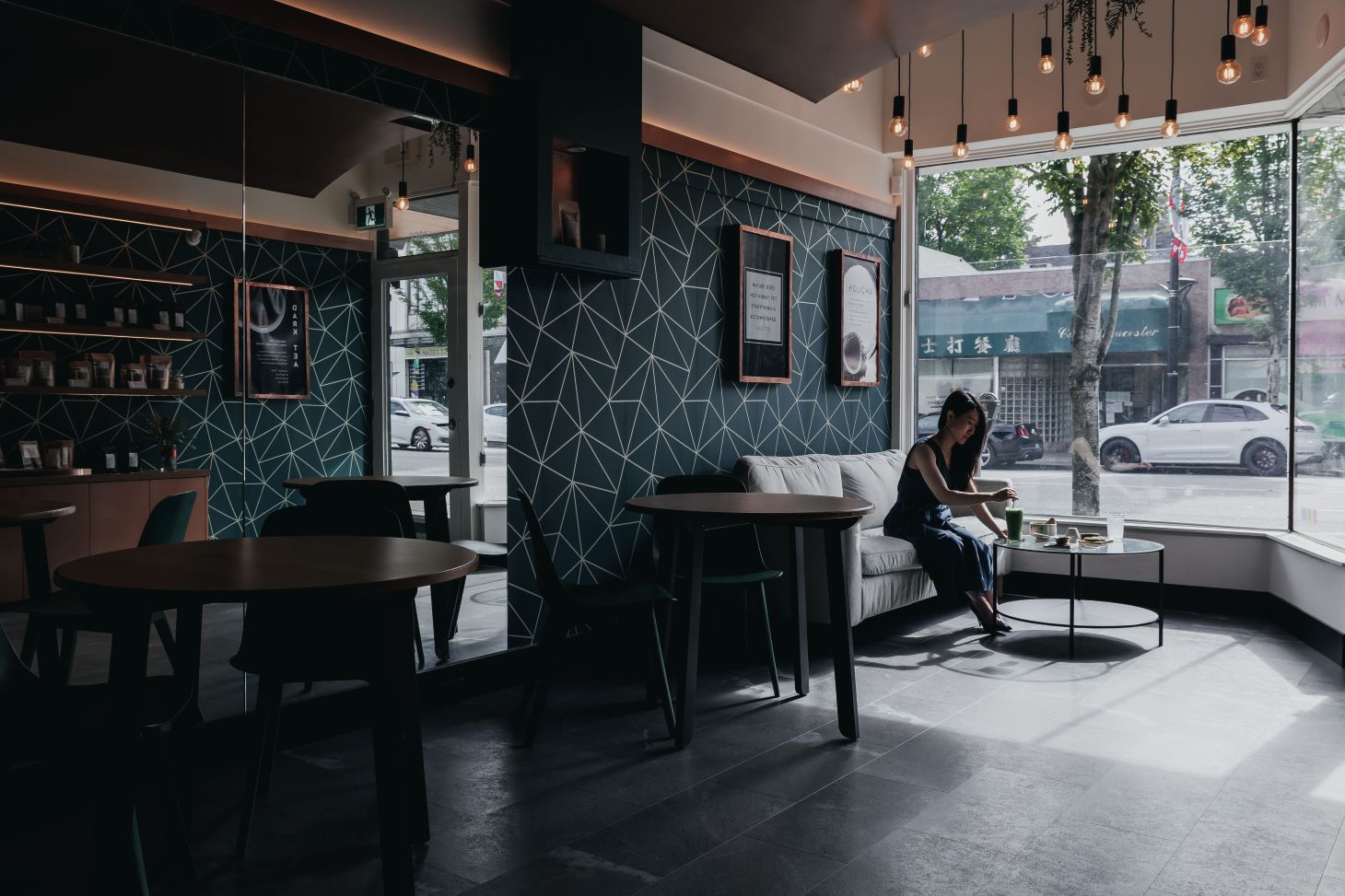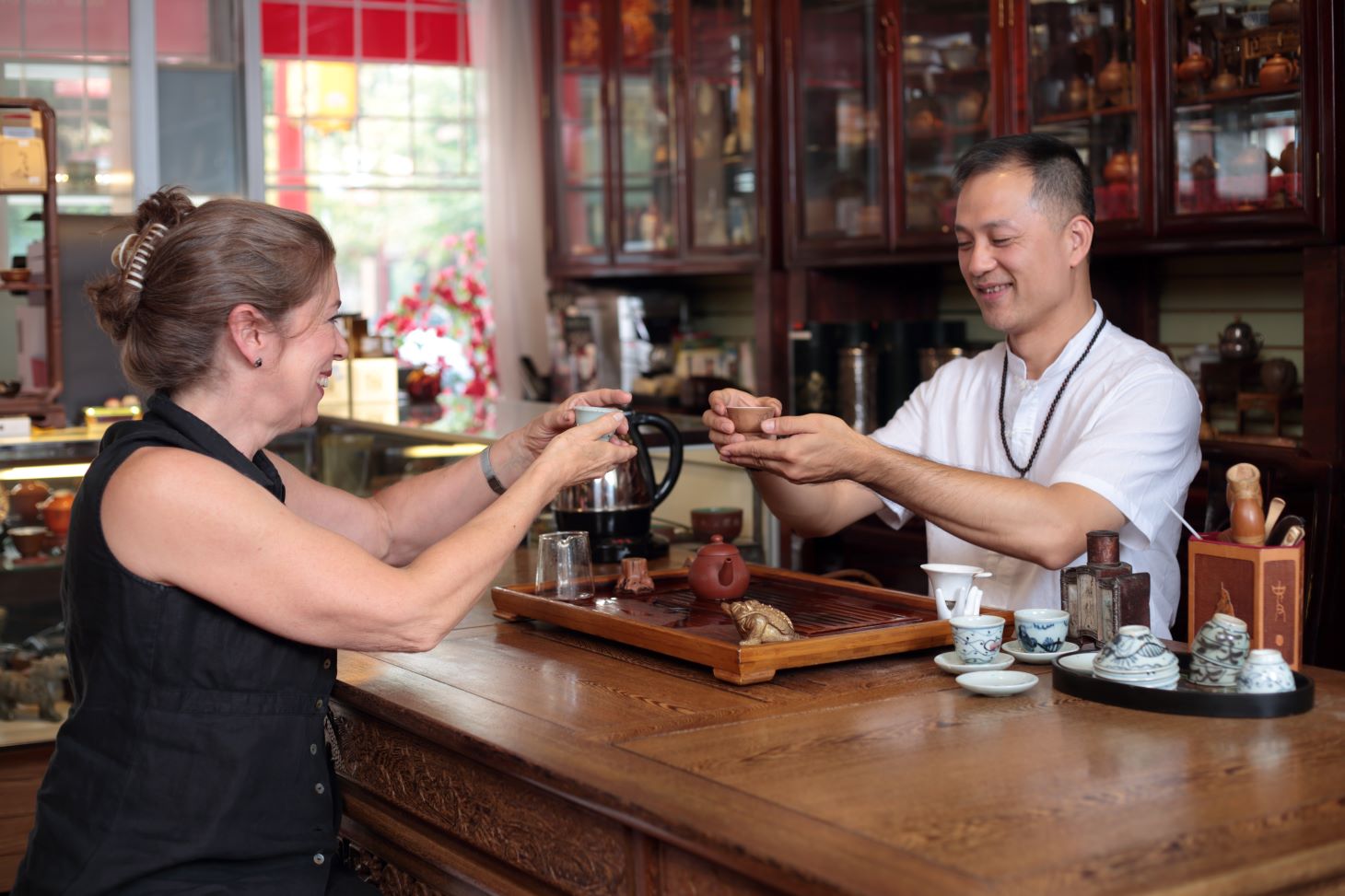In Vancouver Chinatown’s Chinese Tea Shop, the walls lined with traditional tea wares, owner Daniel Lui teaches his customers and students about traditional Chinese tea at an ornate wooden desk beside the counter.
On the desk, Lui has set a tray with a small clay teapot, a filter, a pitcher—which he tells me is called a fair cup—and three small ceramic cups. He starts the kettle boiling and before I can ask a question begins teaching me about tea.
Lui has run the shop since 2002 and has been interested in the culture and history of Chinese tea since his childhood in Hong Kong. Like wine, Daniel tells me, there is so much to consider when it comes to tea: region, altitude, harvest season, the experience and knowledge of the farmers and processors. Each factor can affect the tea’s quality, flavour, bitterness, and mouth feel.
But, he says, the way we prepare the tea affects the taste as well, from the temperature of the water to the steeping time of the leaves and the tea pot and cups used.
“You cannot use a McDonald’s cup to enjoy good wine,” he says.
Lui specializes in the traditional gong-fu cha method of tea-making, which is carefully controlled at every step to bring out the taste. As he prepares oolong, he explains the steps: warming the teapot and sterilizing the teacups and strainer with hot water, rinsing the tea leaves, and then starting the infusions. As he works, he tells me about his experience running the shop.
When he started selling tea over 20 years ago, most of Lui’s customers were people from the local Chinese community who found a feeling of home in his selection. But over time he realized that more and more Westerners, in his words, were coming into his shop—first to buy tea and then to find out how to brew it. Some of his customers who are particularly passionate about tea have become his students, and many of them are young.
“I’m so happy doing that, because as the students learn the tea from me, we are spreading the culture, Chinese tea culture—enjoying tea together,” he says.
If Lui represents a traditional approach to tea that has long steeped in Vancouver’s Asian community, the cutting edge of Vancouver tea is brewed in Paragon Tea Room on Cambie Street, where co-founder Michelle Cheung opens the shop along to the hiss of specialized machines that brew shots for tea lattes.

Michelle Cheung in Paragon Tea Room. Photo courtesy of Luis & Sarah Valdizon of When They Find Us.
I watch as she prepares the bright green matcha and carefully measures out fresh blueberries, syrup, and soy milk for an iced blueberry matcha—the result of recent R&D. She hands it to me beautifully layered—the matcha floating on a bed of rich purple.
Paragon only serves tea: chai, oolong, jasmine, Hong Kong milk tea, Thai tea, bubble tea. This summer has been ruled by matcha, Cheung says, but since the café first opened five years ago, the most popular tea has been hojicha, a roasted green tea that is nutty, earthy, and low in caffeine.
“We’re always giving people a different perspective when it comes to tea,” she says. “Whether it’s tea that is already super well known, we do it differently, or tea that people have never heard of.”
When Cheung moved to Vancouver from Hong Kong in 2007, she noticed that the coffee scene here was vibrant and developed, but that tea hadn’t taken off in the same way. After experimenting with a bubble tea shop, she opened the first Paragon location in 2019 in a shared space with another café. At first, some customers were taken aback when they realized they didn’t serve coffee.
“The first reaction was, ‘Oh, sorry, I’m not a tea drinker,’” Cheung says. “So first of all, why do they need to be sorry? And second of all, why did they define themselves as non tea drinkers? Is tea really that hard to get through people’s minds? But it was also a great reminder that there’s a lack of options … So that actually made our team a lot more determined to take a leap of faith and walk this uphill battle in the middle of a coffee rich country, or continent.”
To Cheung, a cup of tea can tell the stories of many world cultures and represents a cultural diversity that feels quintessentially Vancouver. She wants to show the city that tea can be modernized without losing its roots.
“We never see tea as a final product,” Cheung says. “I focus a lot on the process and the history, there’s a lot of depth in the cup of tea.… At the end, that final 16-ounce drink that people are enjoying, it has a lot of artwork and hard work that goes into it, and a lot of the skills and craftsmanship and wisdom from our ancestors.”
“We try to tell people that traditions can be re-served with a bit of innovation,” she says. “Throw in some creativity, and tea really draws people together.”

Daniel Lui and patron. Image courtesy of The Chinese Tea Shop.
In Chinatown, with the first brew of oolong ready, Lui shows me how to lift the small cup with just two fingers and slurp the tea into my mouth without letting my lips touch the rim. When I make a timid slurping sound, he tells me to be louder. The tea is sweet and floral, and I savour each small sip. When I finish drinking, Daniel starts preparing the next infusion—each time, the flavour becomes stronger.
Sitting suspended in this moment, I think about how different this process feels to my usual routine of pouring boiling water over a tea bag or standing in line at a busy chain coffee shop. There is beauty in the way time slows down, stretching from history to the present. In a busy and diverse city, these rituals feel like an escape and also a moment of connection—something rooted, but also something that can grow and become new.
“This is a part of our life,” Lui tells me as I take my last sip. “We may not be able to do everything perfect. Go through the process, again and again.”
Read more food and drink stories.









